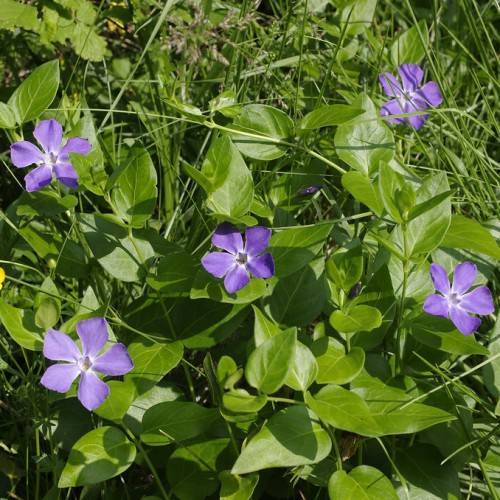
common periwinkle
Vinca minor
Also Known As - creeping myrtleCycle:
Herbaceous Perennial
Watering:
Minimum
Hardiness Zone:
4 - 8
Flowers:
Flowers In Spring
Sun:
Filtered shade, Full sun
Soil:
Acidic, Well-drained
Fruits:
Fruits In Spring Ready In
Leaf:
Yes
Growth Rate:
High
Maintenance:
Moderate
Salt Tolerant:
Yes
Invasive:
Yes
Care Level:
Low
watering
Common periwinkle requires regular watering to ensure a healthy and lush foliage. That being said, it is best to avoid over-watering as this can cause root rot. During the summer months, these plants usually need to be watered once per week, though it is recommended to check the soil moisture every few days to assess the plant's water needs. In dry climates, you may need to water more often. In winter, it is best to water only when the soil is completely dry, usually once every 1 to 2 weeks. Always ensure that the soil is lightly moist, and not saturated.
sunlight
Common periwinkle is an evergreen subshrub species that typically prefers a sunny spot for growing, as it does best in direct sunlight. The plant prefers full sun for the majority of the day, approximately 6 to 8 hours per day. Depending on the region, this can vary from late spring through early fall. In areas with intense summer temperatures, common periwinkle should receive dappled shade in the afternoons during the intense heat rather than direct sun for too long.
pruning
Common periwinkle (Vinca minor) should be pruned in late winter or early spring when temperatures begin to rise. It is important to prune them back hard as they have a tendency to become overgrown with thick foliage. Cut the stems back to within 6 to 10 inches of the ground for best results. To encourage a more dense growth habit, shear older stems back more frequently. Pruning can also be done aggressively after flowering is complete, save for leaving some of the longer stems as they will produce berries in the fall that add winter interest and attract wildlife.
